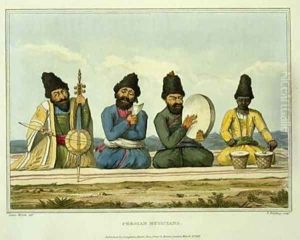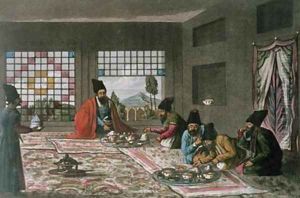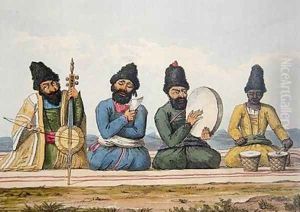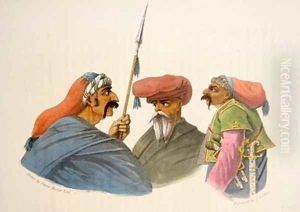Morier, James Justinian Paintings
James Justinian Morier was a British diplomat and writer, best known for his novels about Persian society, in particular, 'The Adventures of Hajji Baba of Ispahan.' Born in 1780 in Ottoman Smyrna (now Izmir, Turkey), Morier was the son of Isaac Morier, a British consul. His family background provided him with a deep understanding of diplomatic relations and the cultures of the Near East, which would later inform his literary works.
Morier began his career by following in his father's footsteps, entering the diplomatic service. His first significant appointment was as an attaché to the British embassy in Constantinople. Later, he accompanied Sir Harford Jones from 1806 to 1810 on a mission to Persia, which gave him firsthand experience of Persian society and customs. This experience would greatly influence his future writings.
After his time in Persia, Morier wrote a series of tales and narratives inspired by the vibrant culture and society he had observed. His most famous work, 'The Adventures of Hajji Baba of Ispahan,' was published in 1824 and became an immediate success. The novel is a satirical depiction of Persian society and is told through the eyes of its roguish yet charming protagonist, Hajji Baba. The book was appreciated for its humor, vivid description, and keen social observation, bringing to life the sights, sounds, and smells of early 19th-century Persia.
Morier's other works include a sequel to his Hajji Baba novel, 'The Adventures of Hajji Baba of Ispahan in England,' and several other books such as 'Zohrab the Hostage,' 'Ayesha, the Maid of Kars,' and 'The Mirza.' His works not only contributed to Western perceptions of the East but also served as valuable historical documents on Persian society and culture of the time.
James Justinian Morier's legacy as a writer is marked by his ability to bridge cultures through his narratives. His novels remain a testament to his skill in storytelling and his detailed, nuanced portrayal of the Near East. Morier passed away in 1849, but his works continue to be read and studied for their cultural and literary significance.



